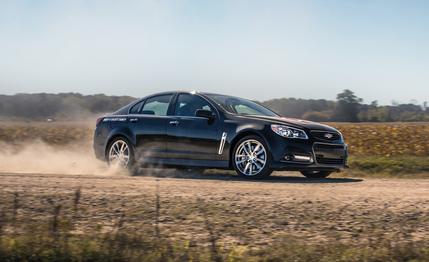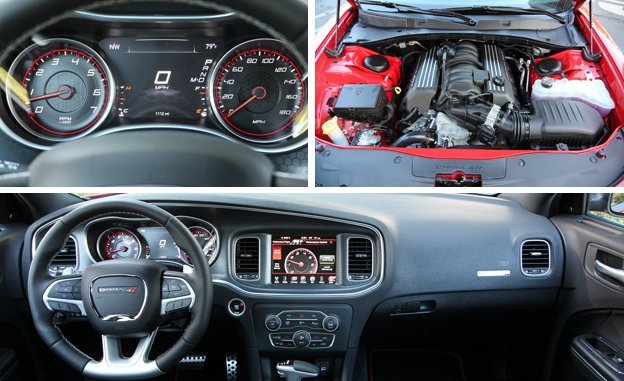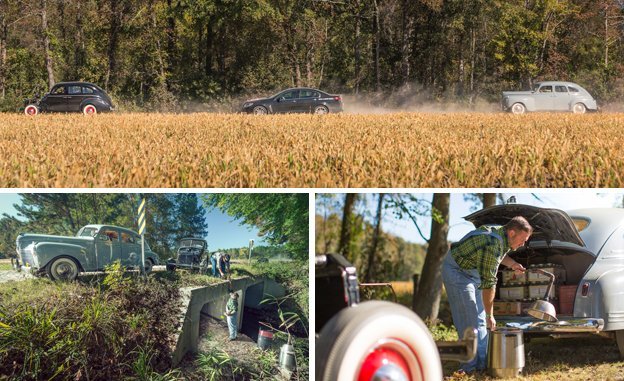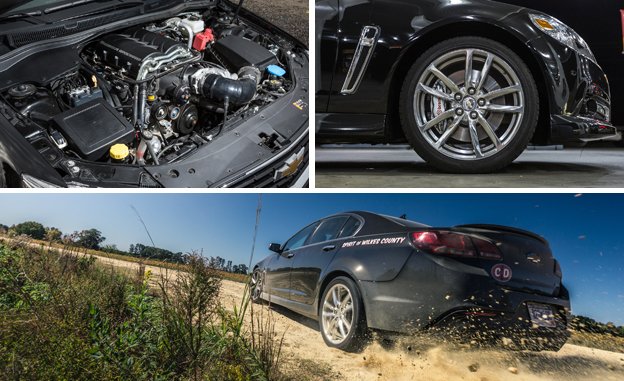
 Instrumented Test
From the April 2015 issue
Instrumented Test
From the April 2015 issue
American whiskey is having a moment. According to the Distilled Spirits Council, revenue from “super premium” bourbon and Tennessee whiskey went up 104 percent between 2008 and 2013. Lesser hooch made nice gains, too, as Americans developed a newfound appreciation for a liquor historically synonymous with saloon brawls and slurred arguments over who done left the T-tops off the Monte Carlo right before that there rainy spell. Bourbon is respectable now, chic and popular with the swells. To find out why, and maybe to enact some quality bootlegging dirt-road fantasies, we decided to take a V-8–powered southern road trip across the hills and hollers of Peak Whiskey.
If you’re going to venture deep into NASCAR country—and, for that matter, the sport’s liquor-running foundations—you need a machine with some bona fides. The Australian-built SS is Chevrolet’s current NASCAR muse, its 415-hp V-8 and rear-drive platform lending some connection, however tenuous, between the cars on the street and the ones on the high ovals. This thing’s so Southern, it’s built in the Southern Hemisphere. G’day, y’all.
To understand whiskey’s present, you have to learn about its moonshine past, which, ahem, also happens to be a big part of its present. At least in North Carolina. The term “bootlegging” tends to conjure up Prohibition-era operations, but illicit distilling persisted long after passage of the 21st Amendment made drink legal again. Even when liquor is lawful, the revenue man wants his cut, and thus making your own hooch is a creative form of tax evasion. That’s why Rosco was always chasing them Duke boys, in case you haven’t put that together.

 Roger Holmes (left) and Robert "Rooster" Kitchen (right) surely wouldn't be standing around with actual moonshine in canning jars.
Roger Holmes (left) and Robert "Rooster" Kitchen (right) surely wouldn't be standing around with actual moonshine in canning jars.
So I begin my voyage outside Fayetteville, North Carolina, talking moonshine with a man named Rooster. I’d met Robert “Rooster” Kitchen at a party where, as happens in North Carolina, there was some moonshine about. It turned out he knew a lot about the stuff. As in, he agreed to show me where one might make moonshine if one were to engage in such an activity. And he’d bring an old family bootlegging car, a 1941 Plymouth Special Deluxe sedan.
I meet Rooster and his friend Roger Holmes at a convenience store. Holmes, I hear, might also know a bit about bootlegging, and his flathead Ford is certainly appropriate to the task. Rooster leads us down a series of dirt roads until we’re deep in the countryside, surrounded by woods and tobacco fields, our cars covered in dust. He halts the Plymouth next to a creek, and we all get out to take a look.
“Now, if you were going to make moonshine, this is the sort of place you’d want to go,” Rooster says. What you need is water to cool the still, in a location where nobody’s going to bother you. And you’d be there at night. “Back in the day, you needed a fire to cook the mash, and the smoke would give you away. So they did it at night, by light of the moon, and that’s where the word moonshine comes from,” Rooster says. He then produces a small still—inoperative, totally for show!—from the trunk of the Plymouth, and sets it up down by the creek. I feel as if I’ve time-traveled to 1952, hanging out with a couple of proto-NASCAR drivers. There’s only one piece of the set that doesn’t jibe with popular legend: the decidedly unmodified nature of the vintage machines. Weren’t bootlegging cars supposed to be all hopped up to outrun the revenue man?


Rooster concedes that many certainly were, but the bootlegging side of his family (his wife’s side, actually) embraced stealth. The Plymouth was owned by Grandma Geraldine and, says Rooster, probably ran more ’shine than any car in Harnett County. “Grandma Geraldine grew up in Tennessee, in the mountains, and they had nothing,” Rooster says. “The first time she ever saw presents under the Christmas tree, moonshine put them there.” The business continued all the way into the 1980s, when these real-life Dukes grew their operation a bit too large and Johnny Law realized that tractor-trailer trucks full of yeast and sugar were perhaps excessive provisions for a convenience-store grill. But before that comeuppance, man, that Plymouth moved a lot of liquor. Just a nice lady driving a bone-stock Plymouth. Nothing to see here, officer.
While we appreciate the notion of subtlety and restraint, we are also big fans of provocation and overkill, so our SS is neither stock nor innocuous. The exterior wears giant NASCAR-inspired stickers provided by 3M and installed by Graphik Concepts of Farmington Hills, Michigan, with script on the rear quarter-panels declaring this car the Spirit of Wilkes County—said locale being the birthplace of moonshine runner cum NASCAR hero Junior Johnson. And before landing in North Carolina, the Chevy took a detour to Lingenfelter Performance Engineering’s shop in Wixom, Michigan, where the 6.2-liter LS3 V-8 received a 2.3-liter Magnuson TVS2300 supercharger, resulting in more horsepower at the wheels (435) than the stock SS has at the crank. It’s nice to have some extra giddyap under the hood when you might have a few additional pounds sitting in the trunk.

 Our supercharged SS, the Spirit of Wilkes County, made 435 hp at the rear wheels. It's a premier dirt-and-rock shooting device.
Our supercharged SS, the Spirit of Wilkes County, made 435 hp at the rear wheels. It's a premier dirt-and-rock shooting device.
That cargo, if you had some, could consist of a sampler of fine homemade hooch, including Cotton Candy, Apple Pie, and The Clear. The first two are self-explanatory in their flavors, with Cotton Candy running 100 to 110 proof and the Apple Pie a more cordial 40 proof. The Clear is essentially bourbon without the lead time; this is what your fancy whiskey looks like before it sits in a charred oak barrel and ages for 8 or 10 or 23 years. Moonshiners stake their reps on The Clear, and some of them define their formulas through what might be called an outsized flavor profile. “I was at a party in West Virginia,” Rooster says, “and a guy opened a jar that was so strong you could smell it about a football field away.”
Rooster’s tales of moonshine and bootlegging get me so fired up that we jump in the SS and head out to determine how it might fare in the service of revenuer evasion. And you know, I think it would do all right. If nothing else, our would-be modern moonshiner would have a blast going sideways on dirt, peppering the pursuers with a fusillade of gravel and a cloud of choking dust. The SS is docile and balanced, a fine example of GM’s chassis expertise. It’s almost like they envisioned the SS doing 60-mph powerslides on gravel, which, given the car’s Australian origins, maybe they did.